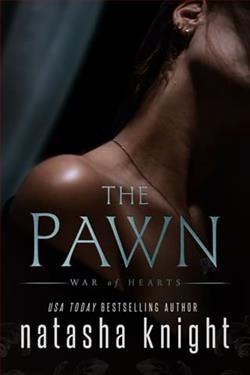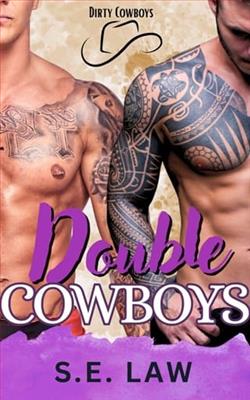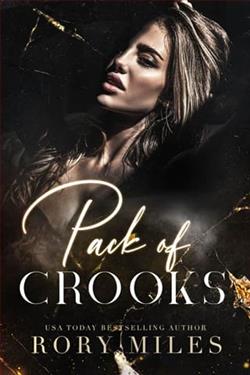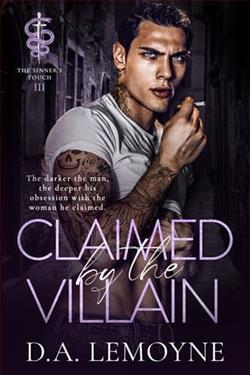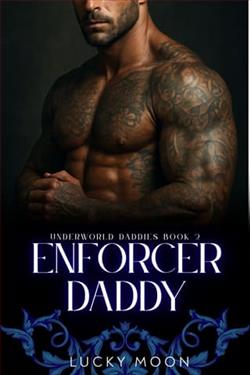Page 29 of Black Coffee (Hercule Poirot 7)
Captain Arthur Hastings returns to narrate this account of a personal challenge made to ‘Mr Clever Poirot’ by a killer who identifies himself as ‘ABC’ and who leaves the ABC Rail Guide next to his victims — apparently intending to work through the English countryside (he has struck in Andover, Bexhill-on-Sea, and Churston) and exercise Poirot along the way. Serialized in London’s Daily Express, The ABC Murders became a cultural phenomenon as readers were invited to try to keep up with the famous Belgian detective. It is a challenge that remains fresh and thrilling to this day — and makes The ABC Murders one of the absolute must-reads of the Christie canon.
Julian Symons: ‘A masterwork of carefully concealed artifice… most stunningly original.’
Sunday Times: ‘There is no more cunning player of the murder game than Agatha Christie.’
14. Murder in Mesopotamia (1936)
Nurse Amy Leatheran had never felt the lure of the ‘mysterious East,’ but she nonetheless accepts an assignment at Hassanieh, an ancient site deep in the Iraqi desert, to care for the wife of a celebrated archaeologist. Mrs Leidner is suffering bizarre visions and nervous terror. ‘I’m afraid of being killed!’ she admits to her nurse. Her terror, unfortunately, is anything but unfounded, and Nurse Leatheran is soon enough without a patient. The world’s greatest detective happens to be in the vicinity, however: having concluded an assignment in Syria, and curious about the dig at Hassanieh, Hercule Poirot arrives in time to lead a murder investigation that will tax even his remarkable powers — and in a part of the world that has seen more than its share of misadventure and foul play.
The New York Times: ‘Smooth, highly original, and completely absorbing.’
15. Cards on the Table (1936)
‘The deduction,’ Agatha Christie writes in her Foreword to this volume, ‘must ... be entirely psychological ... because when all is said and done it is the mind of the murderer that is of supreme interest.’ There is probably no neater encapsulation of what makes Agatha Christie’s works so fresh, so fascinating, so many years after they were written. And this statement appropriately opens the novel that is regarded as Agatha Christie’s most singularly challenging mystery — it is, in fact, Hercule Poirot’s own favourite case.
Poirot is one of eight dinner guests of the flamboyant Mr Shaitana. The other invitees are Superintendent Battle of Scotland Yard (introduced in The Secret of Chimneys); Secret Service agent Colonel Race (who first appeared in The Man in the Brown Suit); Mrs Ariadne Oliver, a famous author of detective stories (introduced in Parker Pyne Investigates and who will figure in five more Poirots) — and four suspected murderers. After dinner, there will be a few rounds of bridge: the four investigators playing at one table; the four murder suspects at another. Mr Shaitana will sit by the fire and observe. This he does — until he is stabbed to death. The ultimate ‘closed-room murder mystery’ awaits the intrepid reader. Who is the murderer? And who will solve the crime?
Fair warning: Poirot casually reveals the solution to Murder on the Orient Express in Cards on the Table.
Daily Mail: ‘The finest murder story of her career… Mrs Christie has never been more ingenious.’
16. Murder in the Mews (1937)
In the title work in this collection of novellas, Poirot and Inspector Japp collaborate on the investigation of a suspicious suicide. The supernatural is said to play in the disappearance of top secret military plans in The Incredible Theft — an incredible claim, indeed, as Poirot will prove. The bullet that kills Gervase Chevenix-Gore shatters a mirror in Dead Man’s Mirror — just the clue Poirot needs to solve the crime. And, while basking on white Mediterranean sands, Poirot stares trouble in the face — the beautiful face of Valentine Chantry, now celebrating her fifth marriage — in Triangle at Rhodes.
Daily Mail: ‘All four tales are admirable entertainment… Mrs Christie’s solutions are unexpected and satisfying.’
17. Dumb Witness (1937)
Agatha Christie wrote this mystery for dog lovers. She was certainly one herself, dedicating the novel to her own pet. Captain Arthur Hastings, in his penultimate Poirot appearance (like Poirot, Curtain will be his last), again takes up narrative duties — along with, remarkably, the eponymous Bob, a wire-haired terrier who, upon careful inspection, declares Poirot ‘not really a doggy person.’ But Poirot is present to inquire into the natural-seeming death of Bob’s mistress, Miss Emily Arundell. Natural-seeming, except that Miss Emily had written Poirot of her suspicions that a member of her family was trying to kill her: a letter Poirot received too late — in fact, two months too late — to help. Poirot and Bob will sniff out the murderer nonetheless (and Bob will win a happy new home, with Captain Hastings who is, most decidedly, a ‘doggy person’).
Fair warning: Dumb Witness is best read after The Mysterious Affair at Styles; The Murder of Roger Ackroyd; The Mystery of the Blue Train; and Death in the Clouds — since the identity of the criminal in each is revealed in this novel.
Glasgow Herald: ‘One of Poirot’s most brilliant achievements.’
18. Death on the Nile (1937)
Among the best-loved of Agatha Christie’s novels, Death on the Nile finds Hercule Poirot again trying to enjoy a vacation — this time aboard the S.S. Karnak, steaming between the First and Second Cataracts of the Nile, with stops at sites of archaeological significance. But Poirot (who, after all, had attempted to retire years before) seems to be perennially unlucky in his choice of holidays. Newlywed Linnet Ridgeway is, in the course of the journey, shot dead in the head, and Poirot has before him a boatload of suspects — and a useful sidekick in Colonel Race of the British Secret Service.
Of note: The producers of Murder on the Orient Express released a film version, also well received (though not by Mrs Christie, who had passed away two years prior), of Death on the Nile (1978), this time casting Peter Ustinov as Poirot.
Daily Mail (of the novel): ‘Flawless.’
19. Appointment with Death (1938)
‘“I’m so sorry,” she said... “Your mother is dead, Mr Boynton.” And curiously, as though from a great distance, she watched the faces of five people to whom that announcement meant freedom...’
We have returned to the Middle East with Hercule Poirot, on our most colourful tour yet: to the Dome of the Rock, the Judean desert, the Dead Sea, and to Petra, ‘the rose-red city,’ that ancient place of heart-stopping beauty — but also of heart-stopping horror, for here sits the corpse of old Mrs Boynton, monstrous matriarch, loathed by one and all. A tiny puncture mark on her wrist is the only sign of the fatal injection that killed her. With only twenty-four hours available to solve the mystery, Hercule Poirot recalls a chance remark he’d overheard back in Jerusalem: ‘You see, don’t you, that she’s got to be killed?’
The Observer: ‘Twice as brilliant as Death on the Nile, which was entirely brilliant.’
20. Hercule Poirot’s Christmas (1938)
This novel was the author’s gift to her brother-in-law, who had complained that her stories were, for him, ‘too academic.’ What he desired was a ‘good violent murder with lots of blood.’ From the epigraph — a quotation from Macbeth —
to its startling end, Agatha delivered a gift made to order.
It is Christmas Eve. The Lee family reunion, never a lively affair, is interrupted by a deafening crash and a high-pitched scream. The tyrannical head of the Lee family, Simeon, lies dead in a pool of blood, his throat slashed. Hercule Poirot is spending the holidays with his friend Colonel Johnson, the chief constable of the local village. At the Lee house he finds an atmosphere not of mourning but of mutual suspicion. Christmas with family — survive it this year with Hercule Poirot.
Fair warning: In an exchange between Poirot and Colonel Johnson, the solution of Three-Act Tragedy is revealed.
21. Sad Cypress (1940)
Beautiful, young Elinor Carlisle stands serenely in the dock, accused of the murder of Mary Gerrard, her rival in love. The evidence is damning: only Elinor had the motive, the opportunity, and the means to administer the fatal poison. Inside the hostile courtroom, one man is all that stands between Elinor and the gallows — Hercule Poirot.
Daily Mail: ‘Poirot solves another exciting case.’
Charles Osborne, Agatha Christie’ biographer: ‘One of the most real, least schematic of crime novels. It is also unusual in that it employs the device of the possible miscarriage of justice ... And it works superbly as a murder mystery.’
22. One, Two, Buckle My Shoe (1940)
‘Nineteen, twenty, my plate’s empty.’ But the reader’s plate is full indeed, as Hercule Poirot must follow a familiar nursery rhyme through a course of murder. The adventure is kicked off by the apparent suicide of a Harley Street dentist — who would also appear to have murdered one of his patients. Hercule Poirot has himself been this dentist’s patient on this very day, and suspects foul play. A shoe buckle holds the key to the mystery. But — five, six — will Poirot pick up sticks, and — seven, eight — lay them straight... before a murderer can strike again?








